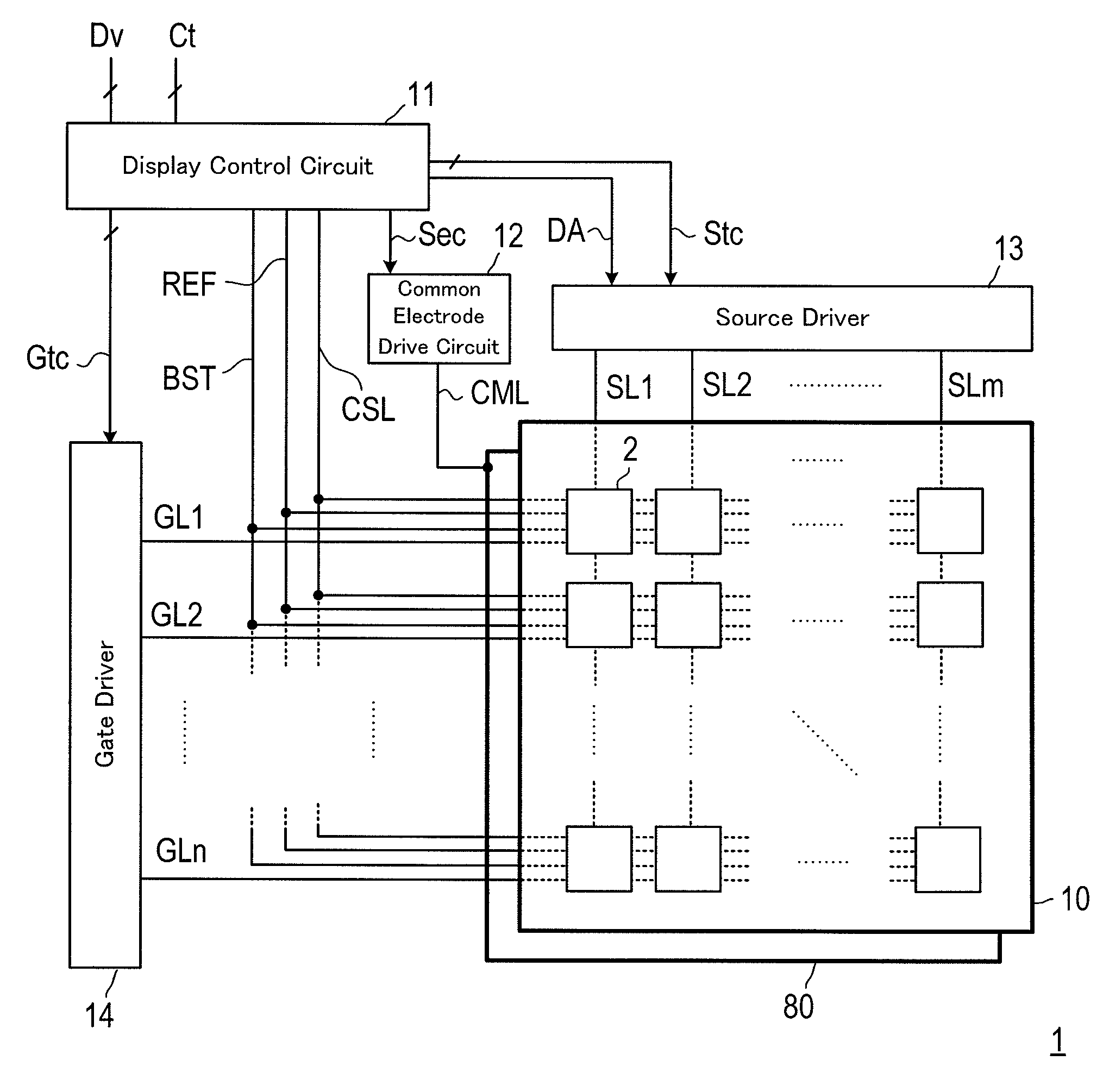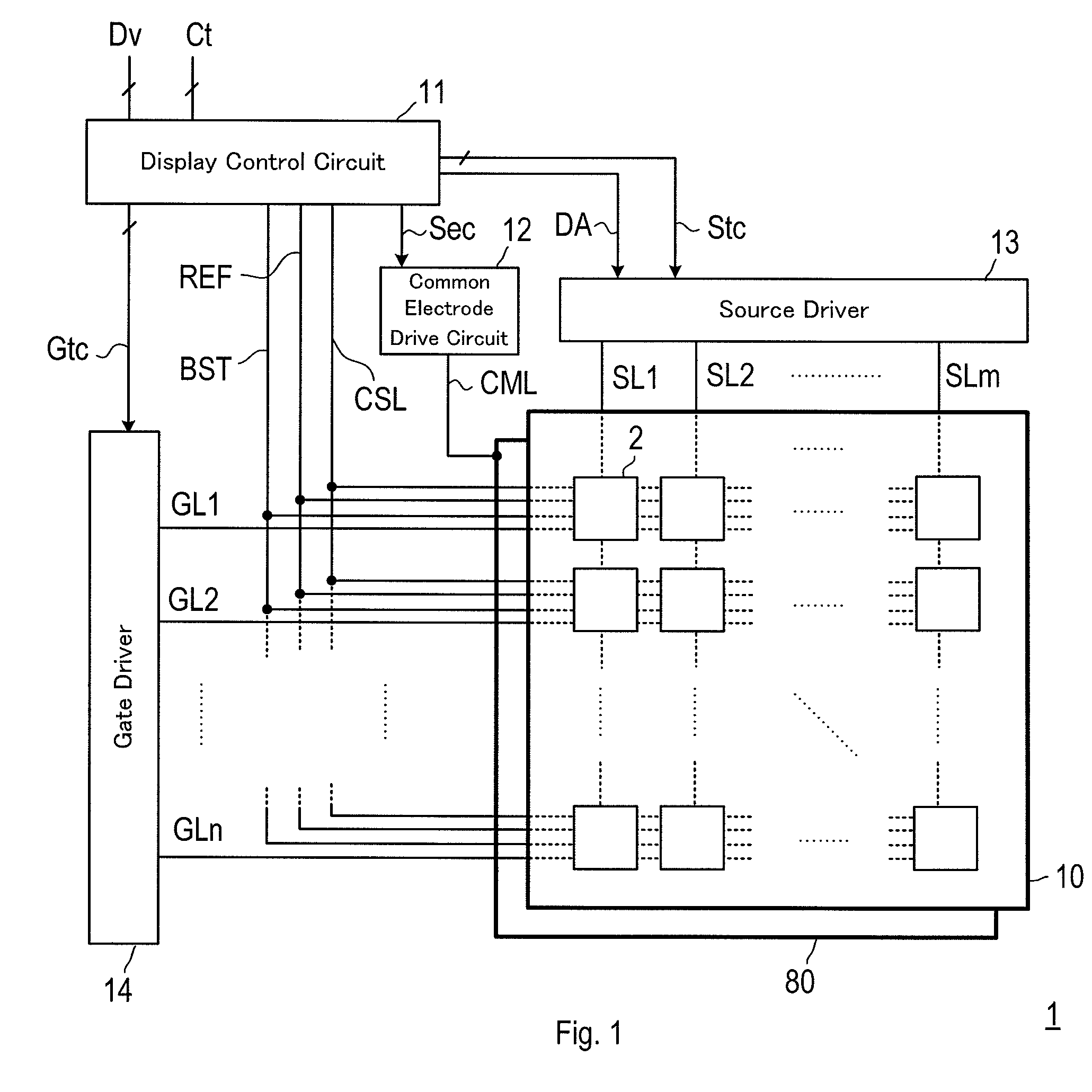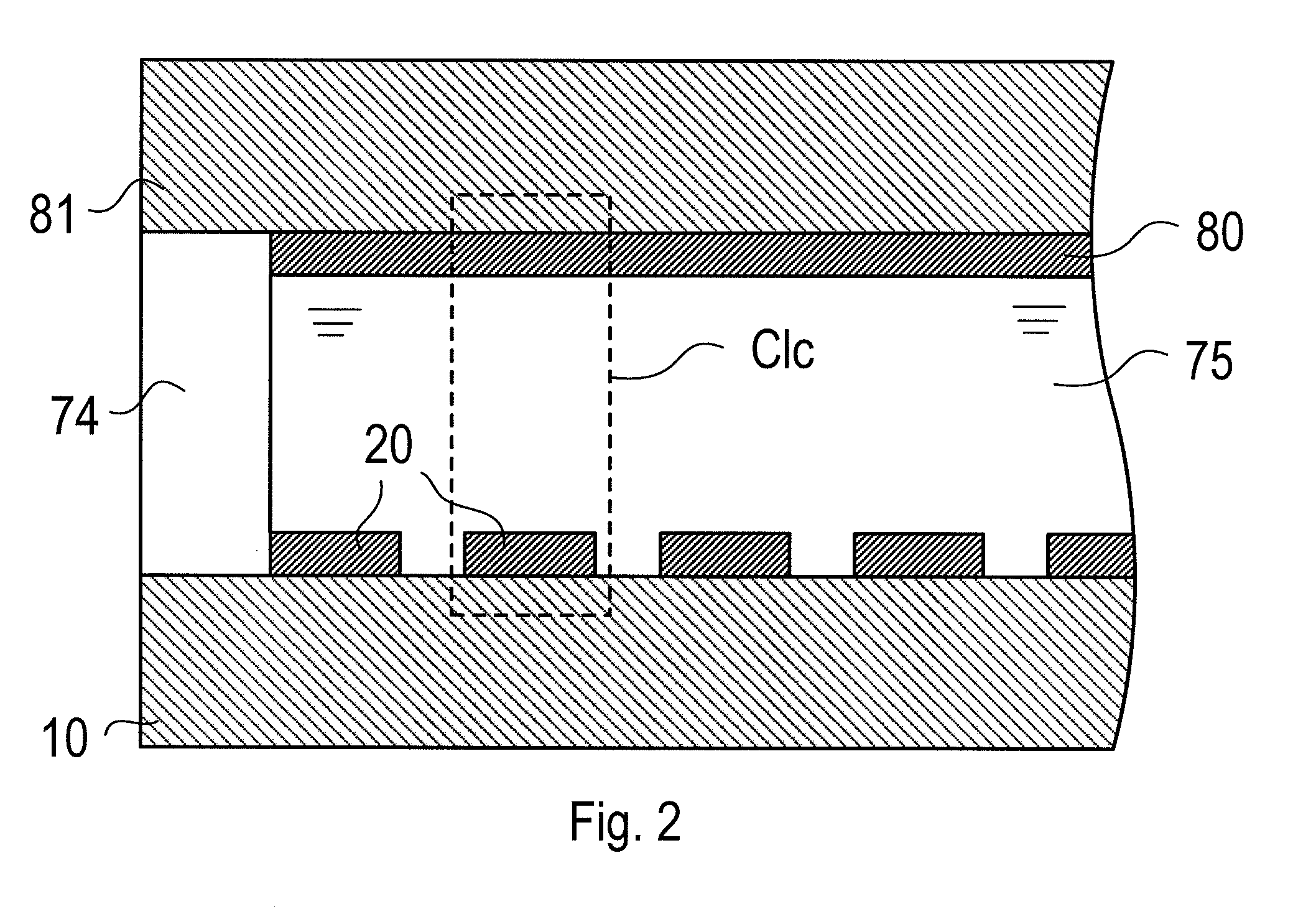Pixel circuit and display device
a display device and pixel circuit technology, applied in the field of active matrix type display devices, can solve the problems of fluctuation of the data voltage held in the pixel electrode, and inability to provide sufficient contrast, so as to achieve the effect of not reducing the aperture rate largely and cutting power consumption
- Summary
- Abstract
- Description
- Claims
- Application Information
AI Technical Summary
Benefits of technology
Problems solved by technology
Method used
Image
Examples
first embodiment
[0138]In a first embodiment, a description will be given of configurations of the display device of the present invention (hereinafter, simply referred to as the “display device”) and the pixel circuit of the present invention (hereinafter, simply referred to as the “pixel circuit”).
[0139]>
[0140]FIG. 1 shows a schematic configuration of a display device 1. The display device 1 includes an active matrix substrate 10, an opposite electrode 80, a display control circuit 11, an opposite electrode drive circuit 12, a source driver 13, a gate driver 14, and various signal lines which will be described below. On the active matrix substrate 10, a plurality of pixel circuits 2 are arranged in raw and column directions, respectively, and a pixel circuit array is formed.
[0141]In addition, the pixel circuit 2 is shown as a block in FIG. 1 so as to prevent the drawing from becoming complicated. Moreover, for descriptive purposes, the active matrix substrate 10 is shown above the opposite electro...
second embodiment
[0196]In a second embodiment, a description will be given of a self refreshing action in each of the first to third type pixel circuits with reference to the drawings.
[0197]The self refreshing action means an action in the constant display mode performed for the plurality of the pixel circuits 2 such that the first switch circuits 22, the second switch circuits 23, and the control circuits 24 are activated in a predetermined sequence, and the potentials of the pixel electrodes 20 (this is also the potentials of the internal nodes N1) are restored to a potential of the gradation written in the last writing action, and for the pixels of all gradations, the pixel circuits are collectively recovered at the same time with respect to each gradation. The self refreshing action is a specific action by the pixel circuits 2A to 2E in the present invention, and power consumption can be considerably reduced, compared to the conventional “external refreshing action” in which the potential of the...
third embodiment
[0279]In the third embodiment, a description will be given of a case where the self refreshing action is executed by a voltage application method different from that of the second embodiment, with reference to the drawings. In addition, the self refreshing action of this embodiment is divided into the refreshing step S1 and the stand-by step S2, similar to the second embodiment.
[0280]According to the second embodiment, only the internal node N1 of the case H (high voltage writing) is refreshed in the phase P1, and only the internal node N1 of the case M (middle voltage writing) is refreshed in the phase P2. Thus, in the step S1, the pulse voltage needs to be applied to the boost line BST in each of the phase P1 and phase P2.
[0281]Meanwhile, according to this embodiment, only the internal node N1 of the case M (middle voltage writing) is refreshed in the phase P1, and only the internal node N1 of the case H (high voltage writing) is refreshed in the phase P2 as will be described belo...
PUM
 Login to View More
Login to View More Abstract
Description
Claims
Application Information
 Login to View More
Login to View More - R&D
- Intellectual Property
- Life Sciences
- Materials
- Tech Scout
- Unparalleled Data Quality
- Higher Quality Content
- 60% Fewer Hallucinations
Browse by: Latest US Patents, China's latest patents, Technical Efficacy Thesaurus, Application Domain, Technology Topic, Popular Technical Reports.
© 2025 PatSnap. All rights reserved.Legal|Privacy policy|Modern Slavery Act Transparency Statement|Sitemap|About US| Contact US: help@patsnap.com



